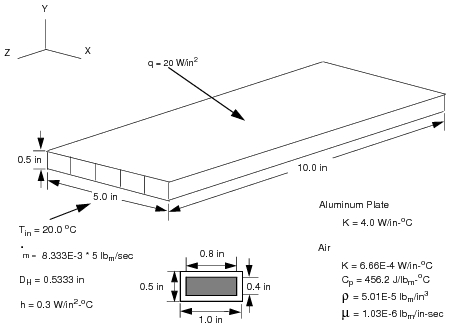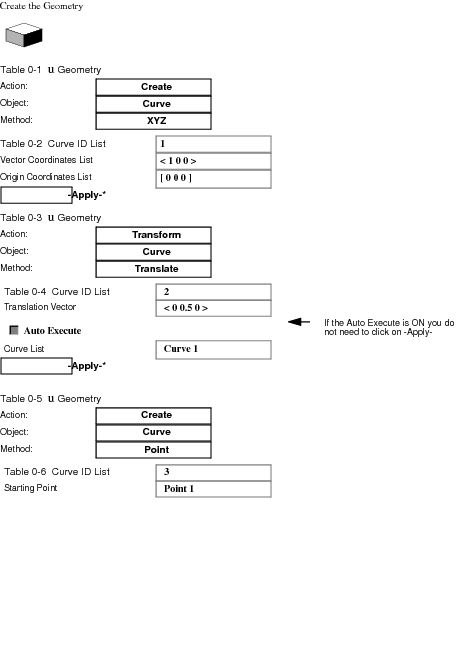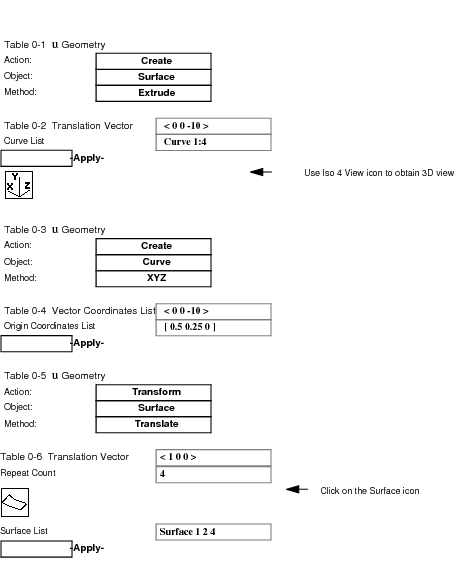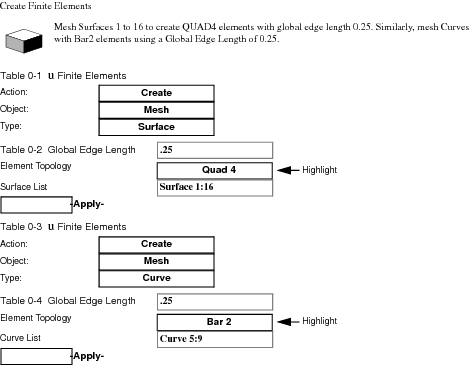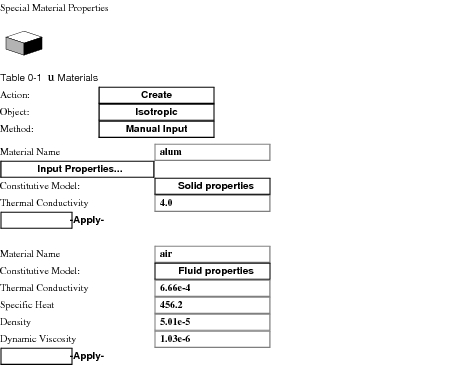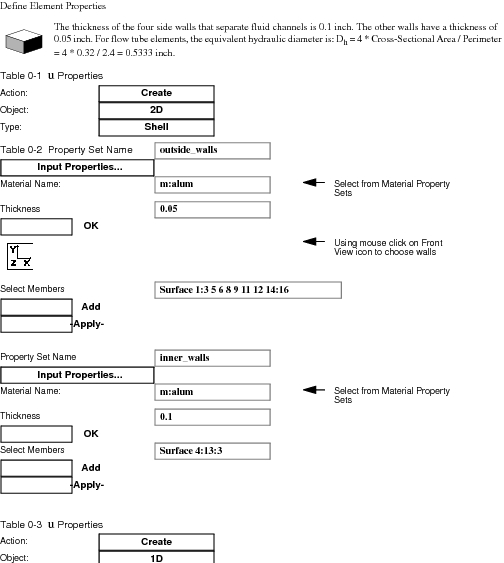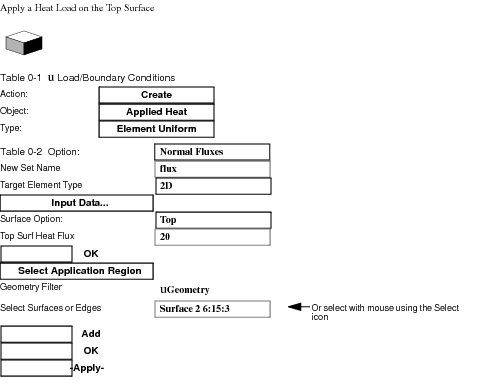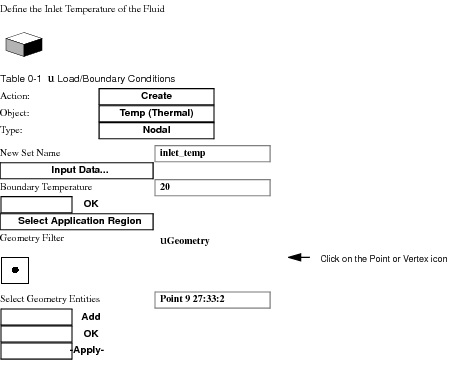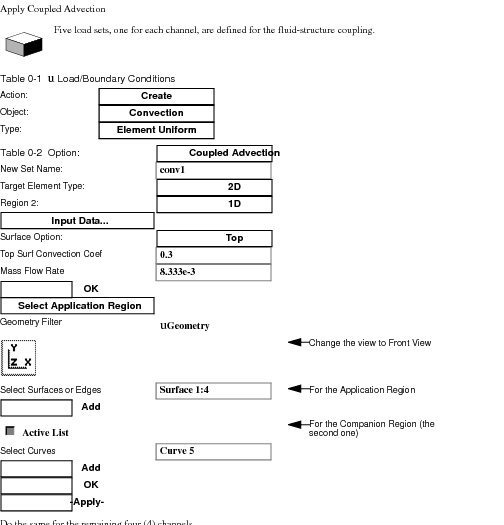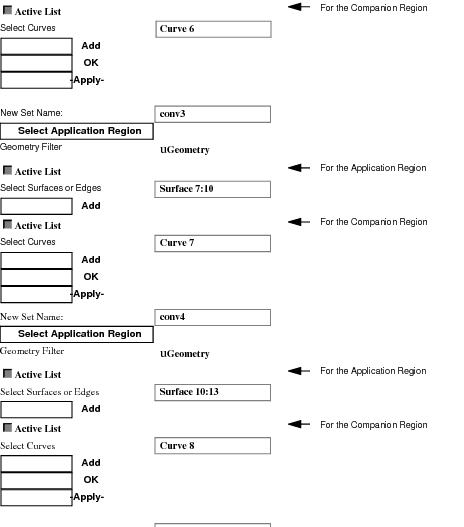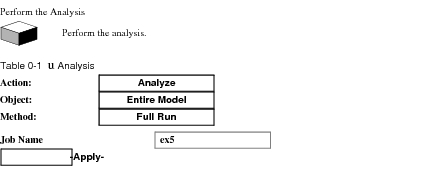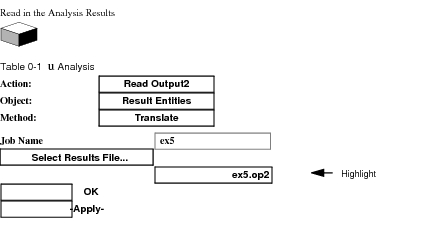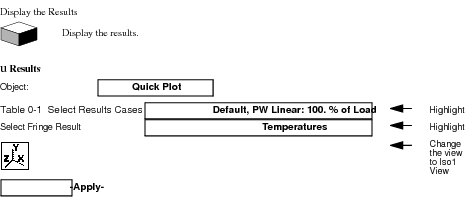XXXXXXXXXXXXXXXXXXXXXXXXXXXXXXXXXXXXXXXXXXXXXXXXXXXXXXXXXXXXXXXXXXXXXXXXXXXXXXXXXXXXXXXXXXXXXXXXXXXXXXXXXXXXXXXXXXXXXXXXXXXXXXXXXXXXXXXXXXXXXXXXXXXXXXXX''"> 7.6 Example 5 - Typical Avionics Flow
Problem Description
Forced air convection is a very efficient method of removing heat in a limited space. In electronic packaging, forced air convection is used to remove heat in a compact heat exchanger. Modeling this problem within the Patran MD Nastran system requires building a structural model and a fluid model, and connecting them in an appropriate fashion. Patran can associate the structure nodes with the fluid nodes using a technique called the Closest Approach method. This method allows the analyst an option to specify non-coincident mesh sizes on the structure and the fluid nodes. However, it is recommended that you use an identical mesh size for a regular isoparametric rectangular mesh, as demonstrated in this example.
Modeling
The compact heat exchanger dimensions are 0.5 inch high, 5.0 inches wide, and 10 inches long. The heat exchanger has a total of five rectangular ducts. Each duct has a dimension of 0.8 inch in width and 0.4 inch in height. The inlet temperature of the fluid is at 20 oC. The power density is applied to one side of the heatsink at 20 W/in2. The mass flow rate per channel is 0.5 lbm/min (0.008333 lbm/sec). The fluid properties of the air are evaluated at 25 oC.
Discussion of Results
The heat flux is imposed on the top of the plate with power density of 20 W/in2. The heat is then spread throughout the aluminum heat sink, and is carried away by the forced air convection inside the channels. The inlet temperature is at 20 oC. There will be a temperature rise in the fluid due to the imposed surface heat flux. The maximum temperature, 101.2 oC, occurs near the exhaust of the module. The exit air temperature is at 71.82 oC.
We can check the energy balance on the fluid as follows:
Total heat = 20*5*10=1000 W
The specific heat is 456.2 J/lbm-oC.
The mass flow rate is 0.008333 * 5 = 0.04167 lbm/sec
ΔT = 1000/(0.04167*456.2) = 52.6 oC
Exit air temperature = 20 + 52.6 = 72.6 oC
We can see the exit temperature (71.82oC) calculated by MD Nastran is very close to the hand calculation of 72.6 oC.
